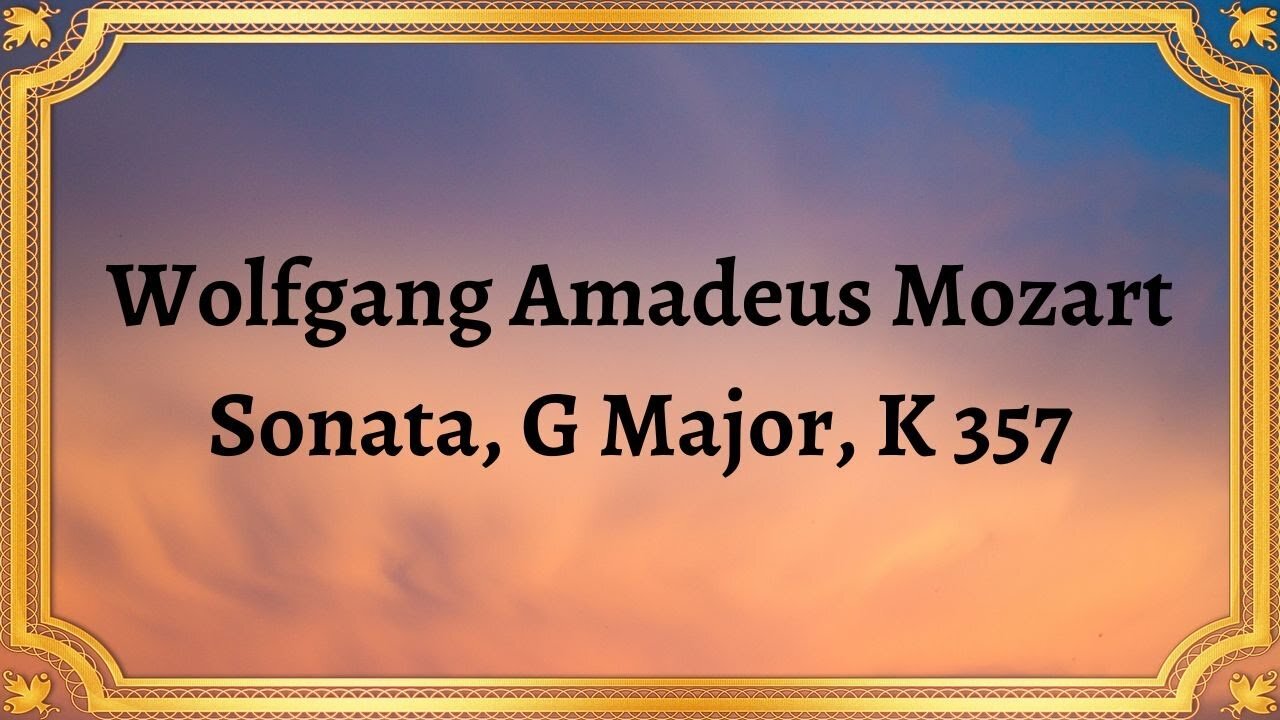Premium Only Content

Wolfgang Amadeus Mozart Sonata, G Major, K 357
#WolfgangAmadeusMozart
#SonatainGMajor
#Classicalmusic
#PianoFourHands
#Allegro
#Andante
#Sonataform
#Counterpoint
#Melody
#Harmony
For Piano Four Hands
Publication date 1950
Jörg Demus; Paul Badura-Skoda
Wolfgang Amadeus Mozart was one of the most prominent composers of the Classical era, and his Sonata in G Major, K 357, is one of the most popular pieces of music ever written. Composed in 1781, it is also known as Sonata for Piano Four-Hands.
The Sonata is a three-movement piece that highlights Mozart's skill in composing for two pianists playing on a single instrument. The first movement, marked Allegro, showcases Mozart's sense of melody and harmony that he was famous for. The second movement, marked Andante, provides a more subtle and tender experience, depicting the composer's lyrical sense and his ability to weave the music's melodies into lush harmonies. Finally, the piece moves into the third movement, Allegro, where Mozart's brilliance in writing for the piano takes center stage with complex rhythms and cadences.
Mozart's Sonata in G Major is considered one of his most delightful works, with an unmistakably peppy and buoyant character. The varied, yet cohesive melody and harmonic material are further complemented by the composer's deft use of forms, dynamics, and textures. The first movement, for example, is structured in sonata form with an exposition, development, and recapitulation. Mozart uses an elegant representation of harmony and counterpoint that foreshadows the music of the Romantic era that followed the classical period.
The Sonata's second movement is marked Andante and is for the most part written in the key of E minor. It exhibits Mozart's ability to steer away from complexity in his approach to instrumentation, form, and drama and instead create an atmosphere of peace and contemplation in the music. It is among the most beautiful interludes for four-hand piano in the repertoire.
The third movement, Allegro, is a fast-paced and energetic showcase of virtuosity with complex rhythms and interesting musical figures. Indeed, it is a perfect representation of the composer's lively and exuberant writing style that had a profound influence on the following eras of classical, romantic, and modern music.
In conclusion, Wolfgang Amadeus Mozart's Sonata in G Major, K 357, is a testament to his exceptional talent and creativity as a composer. The composition's complexity and structural integrity blend seamlessly with the music's emotional expressiveness, resulting in one of the most beautiful compositions in classical
You have the opportunity to support the channel https://destream.net/live/RadSiarAl/donate
-
 20:26
20:26
Classical music_Music Inspiration
1 month agoJohann Sebastian Bach Orchestral Suite No. 2 in B minor, BWV 1066
842 -
 LIVE
LIVE
Spartan
1 hour agoSpartan - Pro Halo Player for OMiT | Scrims vs Tenrai then ranked (probably)
82 watching -
 22:09
22:09
MYLUNCHBREAK CHANNEL PAGE
7 hours agoThe 5 Eyes Are Watching You - Pt 1
4.43K7 -
 LIVE
LIVE
sophiesnazz
1 hour ago $0.02 earnedTIME TO WIND PEOPLE UP !socials
182 watching -
 LIVE
LIVE
OhHiMark1776
2 hours ago🟢07-26-25 ||||| Halo Multiplayer Rumble: No. 16 ||||| Halo MCC (2019)
63 watching -
 LIVE
LIVE
GamerGril
2 hours agoThe E-Gril Within | First Time Play Through | Saturday Spookfest
85 watching -
 18:22
18:22
Liz Wheeler
2 hours agoWhat Ghislaine Maxwell Knows
4109 -
 LIVE
LIVE
cosmicvandenim
5 hours agoWARZONE - Kenetik Energy Announcement - Discord Spy Bots
58 watching -
 1:05:51
1:05:51
Jeff Ahern
2 hours ago $13.79 earnedThe Saturday Show with Jeff Ahern
82.9K10 -
 LIVE
LIVE
Misfit Electronic Gaming
45 minutes ago"LIVE" RUMBLE HALO Spartans "Halo MCC" 23 Followers to go till we hit !000 RUMBLE TAKEOVER
21 watching